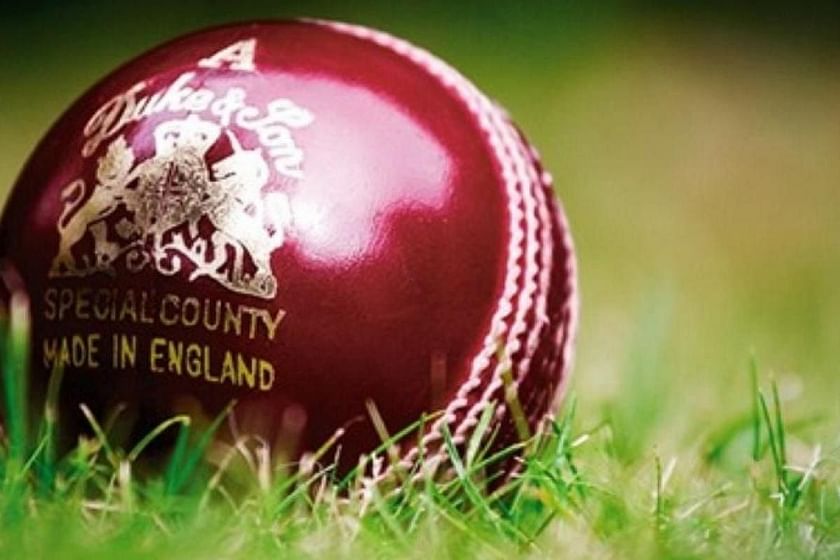Cricket, a sport often celebrated for its elegance and sportsmanship, places as much importance on tactics and prowess as it does on the equipment it employs. Amidst the essential tools of the game, none holds a more pivotal role than the cricket ball itself. Choosing the cricket ball can exert a significant impact on the outcome of a game, and three prominent types have risen to prominence worldwide: the Dukes, Kookaburra, and SG balls. In this piece, we set out on an exploration to unveil the distinct characteristics and complexities of these cricket balls, providing insights into what sets them apart and elucidating the reasons behind their favorability in different cricket-playing nations.
The Dukes Ball: Tradition and Swing
The Dukes cricket ball holds an indelible association with English cricket, having been in use on English soil since the latter part of the 18th century. Its fame is rooted in its exceptional ability to generate substantial swing, encompassing both conventional and reverse swing, rendering it the preferred cricket ball for Test matches held in England. What sets the Dukes ball apart is its hand-stitched, waxed seam, which aids in swing and seam movement. The Dukes ball is known to maintain its shine and hardness longer than its counterparts, allowing for greater movement in the air.
The red Dukes ball is the preferred choice for Test cricket in England, while the white variant is used in limited-overs formats. Bowlers relish the Dukes ball for its ability to produce movement, especially in overcast English conditions. Batsmen, on the other hand, often find it challenging to negotiate the late swing and seam movement generated by the Dukes ball, making it a favorite among bowlers.

Read more.. Farewell to a Cricketing Legend: Exploring Dinesh Karthik’s Retirement Decision
The Kookaburra Ball: Pace and Bounce
In contrast to the Dukes ball, the Kookaburra ball is an integral part of cricketing action in Australia and several other cricketing nations. Known for its consistent seam and pronounced seam elevation, the Kookaburra ball offers pace and bounce, making it particularly suited for Australian pitches and conditions. Its red variant is commonly used in Test cricket, while the white ball is standard in limited-overs formats, including One Day Internationals (ODIs) and Twenty20 matches.
Batsmen appreciate the even bounce offered by the Kookaburra ball, allowing for confident shot selection and strokeplay. Bowlers often rely on its hardness and seam movement during the initial overs of an innings. However, as the ball ages, it tends to lose its shine and becomes less conducive to swing and seam movement.

Read more.. Embracing Cricket Mania: The Impact of Odisha T20 in India
The SG Ball: Spin-Friendly
The SG (Sanspareils Greenlands) ball is the ball of choice for Test cricket in India and is renowned for its spin-friendly nature. It is characterized by a pronounced seam and a robust core, which assists spin bowlers in extracting turn and bounce from the pitch. The red SG ball is predominantly used in Test matches on the subcontinent, and it tends to assist spinners as the game progresses, making it an ideal choice for conditions where spin plays a significant role.
Batsmen often find the SG ball challenging to face as it offers more grip to spin bowlers, resulting in sharp turn and unpredictable bounce. Seam bowlers may not find the same level of assistance from the SG ball as they would with the Dukes or Kookaburra balls, as it tends to favor spin.
Conclusion: The Ball’s Role in the Game
Within the realm of cricket, the selection of a cricket ball is far from a mere ritual; it wields the potential to profoundly sway the outcome of a game. The Dukes, Kookaburra, and SG cricket balls, with their distinctive attributes, are tailored to accommodate the varied playing conditions and inclinations of cricketers spanning the globe.
The Dukes ball thrives in English conditions, offering substantial swing and seam movement. The Kookaburra ball, with its pace and bounce, dominates the cricketing arenas of Australia and beyond. Meanwhile, the SG ball provides the perfect canvas for spin bowlers to weave their magic on the subcontinental pitches.
In essence, these cricket balls transcend being mere implements; they constitute an indispensable element of cricket’s intricate fabric, infusing the sport with richness and variety. Whether it’s the Dukes’ elegant swing in England, the Kookaburra’s lively bounce in Australia, or the SG’s mesmerizing spin in India, each ball bears a heritage and a narrative, bestowing every delivery with its distinct contribution to the cricketing saga.
Read more.. Gaming Innovation: From Computer generated Reality to eSports and Then Some

